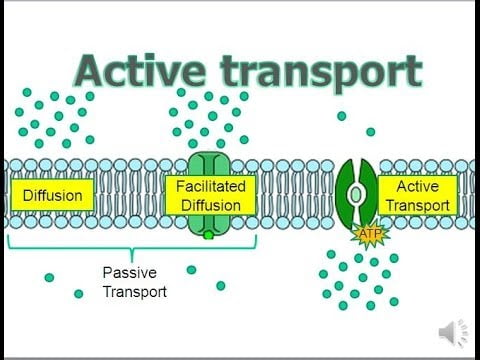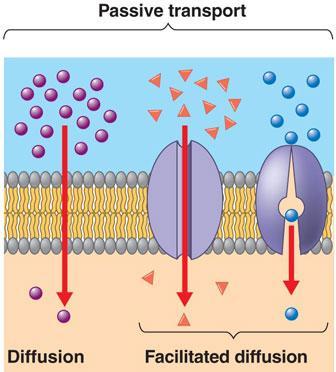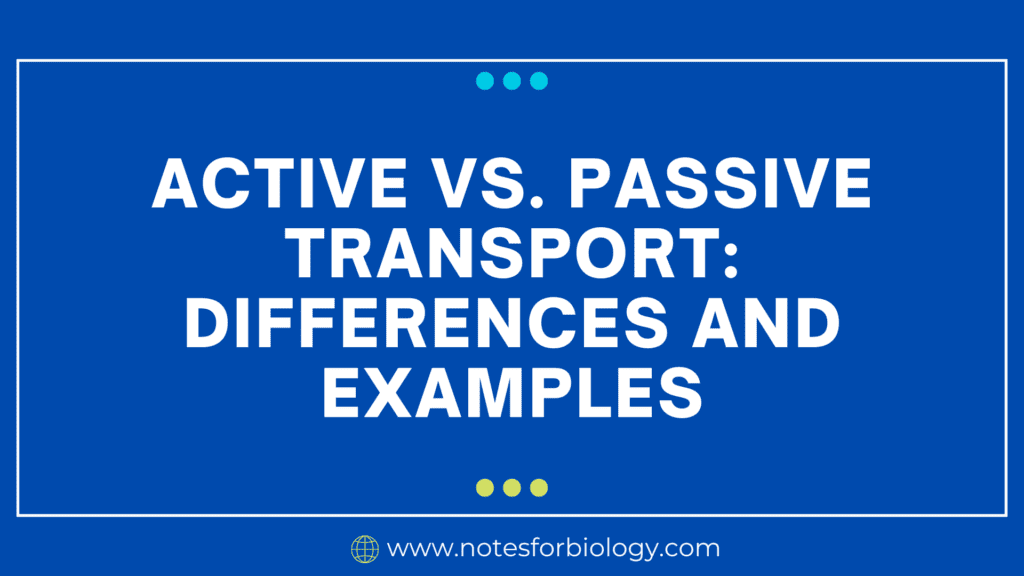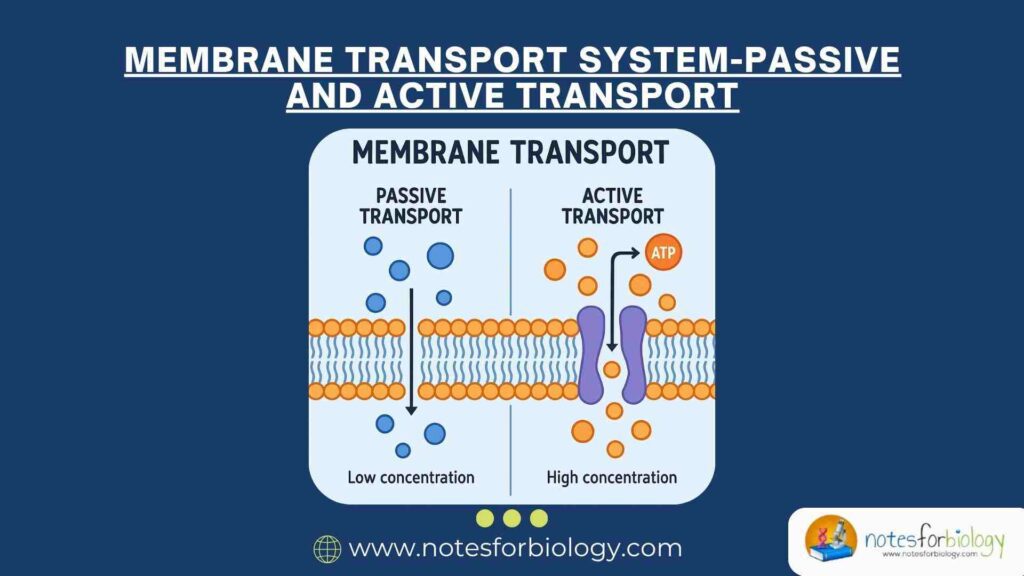Active vs. Passive Transport: Differences and Examples
Active transport is the process by which molecules move across a cell membrane while being pumped against a concentration gradient by ATP, or energy. Passive transport is the movement of molecules through the concentration gradient and across the cell membrane without the use of ATP, or energy. Active vs. Passive Transport are two fundamental mechanisms by which substances move across cell membranes.
Table of Contents
Definitions:
Active
It is a molecular transport, which involves moving molecules across a cell membrane against their concentration gradient and usually needs ATP as an energy source.

Passive
It refers to molecules moving across a cell membrane along their concentration gradient through facilitated diffusion, which occurs without the requirement for energy input.

Active vs. Passive Transport
| S.N | Active Transport | S.N | Passive Transport |
| 1) | Moving molecules across a membrane against the concentration gradient from a region of lower concentration to a region of higher concentration is known as active transport. | 1) | The flow of ions and molecules across a cell membrane that doesn’t require energy is known as passive transport. |
| 2) | Transfers materials from low to high concentrations against the gradient of their concentrations. | 2) | Substances are moved by passive transport, which goes from high to low concentration along their concentration gradient. |
| 3) | Frequently moves polar materials, big molecules, and ions. | 3) | This method carries small, polar molecules and occasionally ions in addition to nonpolar molecules. |
| 4) | Molecules can cross the cell membrane through active transport, upsetting the diffusion-established equilibrium. | 4) | Passive transport keeps water, nutrients, gases, and wastes in a dynamic equilibrium. |
| 5) | Essential for preserving ion gradients and other aspects of cellular homeostasis. | 5) | Facilitates the diffusion of necessary substances, thereby supporting homeostasis. |
| 6) | Cells with high metabolic rates have more active transport. | 6) | Extensive in large surface area cells, but present in all cells. |
| 7) | Carrier proteins are necessary for active transport. | 7) | Carrier proteins have no part in passive transport. |
| 8) | Generally more controlled and slower. | 8) | Generally less regulated and faster. |
| 9) | Utilizes ATP hydrolysis, a form of metabolic energy. | 9) | Requires no energy from metabolism. |
| 10) | Directly related to the metabolism of cells. | 10) | Not dependent on the metabolism of cells. |
| 11) | Able to shift materials out of balance. | 11) | Brings materials closer to balance. |
| 12) | Very ion- and molecule-specific. | 12) | This category includes both nonspecific (simple diffusion) and specific (facilitated diffusion). |
| 13) | Vesicular transport processes like exocytosis and endocytosis are included in active transport. | 13) | Vesicles are not used in passive transport. |
| 14) | Ion gradients and other aspects of cellular homeostasis depend on active transport. | 14) | Facilitates the diffusion of necessary substances, thereby supporting homeostasis. |
| 15) | ATP is normally the source of energy. | 15) | Energy is derived from the innate kinetic energy of molecules through passive transport. |
| 16) | Higher metabolic rate cells have more active transport. | 16) | All cells have passive transport, but large surface area cells have a notably higher level of passive transport. |
| 17) | Membrane potentials can be created and maintained by active transport. | 17) | Gradients are usually dissipated by passive transport unless it is combined with active transport. |
| 18) | A sodium pump, the intestinal selection of glucose, and the uptake of mineral ions by plant roots are a few examples of active transport. | 18) | When oxygen and carbon dioxide are exchanged in the kidneys, liver, and lung alveoli, passive transport takes place. |
In addition:
Active vs passive transport are cellular processes for moving substances across membranes. In order to move substances from low to high concentration against their gradient, active transport needs energy (ATP). Examples of these pumps and carrier proteins are the sodium-potassium pump and endocytosis. As evidenced by the diffusion of oxygen and glucose, passive transport, in contrast, does not require energy and transports substances down gradients from high to low concentration by simple diffusion, facilitated diffusion, or osmosis.
Frequently Asked Questions(FAQ):
Which is faster, active transport or passive transport?
In general, active transportation is quicker than passive transportation. Active transport allows molecules to move quickly by using energy (typically ATP) to move against their concentration gradient. By comparison, passive transport is slower because it depends on diffusion to maintain equilibrium.
How does active transport differ from passive transport?
The main difference is that while passive transport transports materials along their concentration gradient without the need for energy, active transport uses energy (ATP) to move substances against their gradient.
Related Articles:



